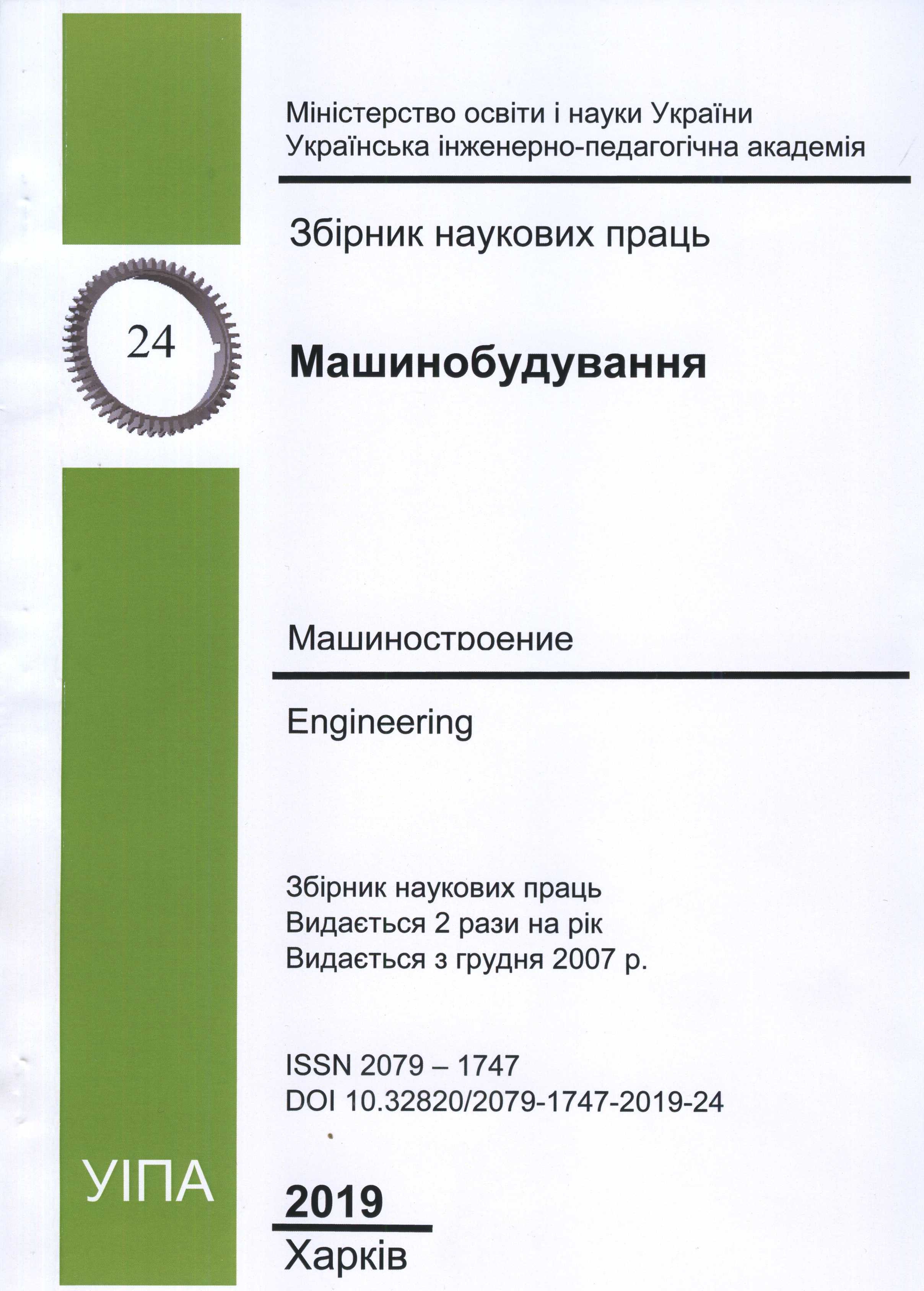Quality Management of Machining
Abstract
DOI: https://doi.org/10.32820/2079-1747-2019-24-59-65
The aim of the work is to develop the spectral theory of systems with variable parameters in relation to the analysis of the quality of machining. The development of spectral theory is necessary to overcome difficulties in designing a class of non-stationary systems. This solves the problem of identifying patterns of dispersion of quality indicators during machining; On the basis of harmonic analysis, factors that influence the output quality of products are classified; A mathematical model of machining is being considered, considered as a polyharmonic process.
Technological systems of machining relate to non-stationary systems with power and thermal effects. In addition, the division of machining errors into deterministic and random has many uncertainties. For example, tool wear traditionally refers to deterministic processes, and from a mathematical point of view, this process is described by Markov chains (an apparatus used to describe random processes). In many cases, it is difficult to decide whether the phenomenon in question is deterministic or random.
As a result of the work, it was found that all the perturbations that affect the process of processing materials by cutting ultimately lead to relative displacements of the tool and the workpiece, which can be represented by a superposition of the constant component of the displacement and individual harmonics of vibration displacements.
The error of the surface profile of the part can also be represented by a superposition of the constant component of the error and its individual harmonics, which creates the prerequisites for identifying individual harmonics of vibration displacements with harmonics of the surface profile of the part to predict processing accuracy, diagnose the causes of precision failures and control accuracy.
Downloads
References
Vasin, SA 2006, Prognozirovanie vibroustojchivosti instrumenta pri tochenii i frezerovanii, Mashinostroenie, Moskva.
Maksarov, VV, Vjushin, RV & Efimov, AE 2017, ‘Tehnologicheskoe obespechenie sherohovatosti poverhnostnogo sloja na osnove modelirovanija perehodnyh processov’, Metalloobrabotka, no. 2, pp. 39-45.
Maksarov, VV & Olt, Ju 2012, ‘Teorija i praktika modelirovanija i upravlenija v oblasti prognozirovanija dinamicheskih svojstv tehnologicheskih sistem’, Metalloobrabotka, no. 2, pp. 7-13.
Suslov, AG, Bazrov, BM, Bezjazychnyj, BF et al. 2012, Naukoemkie tehnologii v mashinostroenii, Mashinostroenie, Moskva.
Fan, X & Loftus, M 2007, ‘The influence of cutting force on surface machining quality’, International Journal of Production Research, vol. 45, no. 4, pp. 899-911.
Nguyen, HT & Hsu, QC 2016, ‘Surface Roughness Analysis in the Hard Milling of JIS SKD61 Alloy Steel’, Applied Sciences, no. 6, pp. 172.
Asiltürk, I & Neşeli, S 2012, ‘Multi response optimisation of CNC turning parameters via Taguchi method-based response surface analysis’, Measurement, vol. 45 (4), pp. 785-794.
Bouzid, L, Boutabba, S, Yallese, MA, Belhadi, S & Girardin, F 2014, ‘Simultaneous optimization of surface roughness and material removal rate for turning of X20Cr13 stainless steel’, International Journal of Advanced Manufacturing Technology, vol. 74 (5-8), pp. 879-891.
Wang, SB, Geng, L, Zhang, YF, Liu, K & Ng, TE 2015, ‘Cutting force prediction for five-axis ball-end milling considering cutter vibrations and run-out’, The International Journal of Advanced Manufacturing Technology, vol. 96, pp. 206-215.
Jeyakumar, S, Marimuthu, K & Ramachandran, T 2013, ‘Prediction of cutting force, tool wear and surface roughness of Al6061/SiC composite for end milling operations using RSM’, Journal of Mechanical Science and Technology, vol. 27 (9), pp. 2813-2822.
Saffar, RJ, Razfar, MR, Zarei, O & Ghassemieh, E 2008, ‘Simulation of three-dimension cutting force and tool deflection in the end milling operation based on finite element method’, Simulation Modelling Practice and Theory, vol. 16, pp. 1677-1688.
Kıvak, T 2014, Optimization of surface roughness and flank wear using the Taguchi method in milling of Hadfield steel with PVD and CVD coated inserts, Measurement, vol. 50, pp. 19-28.
Wojciechowski, S 2015, ‘The estimation of cutting forces and specific force coefficients during finishing ball end milling of inclined surfaces’, International Journal of Machine Tools and Manufacture, vol. 89, pp. 110-123.
Altintas, Y 2012, Manufacturing automation: Metal cutting mechanics, machine tool vibrations, and CNC design, Cambridge university press, Cambridge, New York, Melbourne, Madrid, Cape Town, Singapore, S˜ao Paulo, Delhi, Tokyo, Mexico City.


